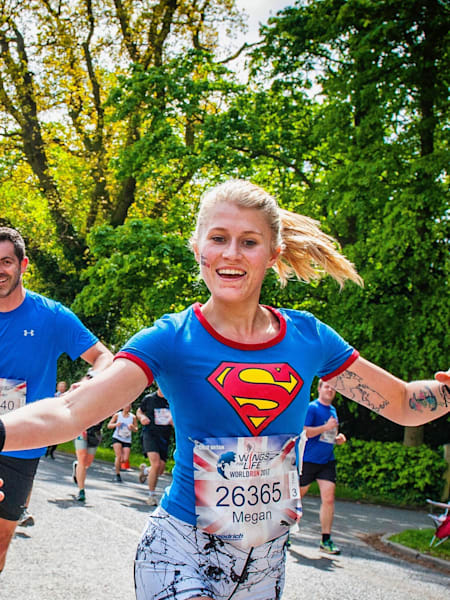The 5K is a bit of an icon in the running world. For seasoned pavement pounders it’s a baseline and how far they’ll go for a really casual, quick jog. Five kilometres is also often the minimum requirement many of the popular running clubs ask that you’re able to do before coming along. But, for novice runners, wannabe runners and can’t-run-won’t-run-non-runners it can seem an insurmountable distance. If you’re not used to it, running 100m can have you feeling sore and out of breath – let alone another 4,900m on top of that.
But, it can be done – and once you’ve cracked it, the route to 10km, half marathons and even marathons will seem a breeze by comparison. We’ve asked Martin Whitelock, of MW5 Fitness running club and bootcamps, and Olivia Ross-Hurst of Adidas Runners London how to get started.
1. Get the right shoes
Specifically, prepare with the shoes you’re planning to run in. To ensure that your shoes are giving you the best support and cushioning possible – which will help reduce the chance of injuries – take a trip to a running store before you even think about pounding the pavements.
“Running shoes don’t need to be expensive,” explains Martin, “but they should certainly be comfortable. Get your gait [how your feet hit the ground] assessed in any good running store, and go for a shoe that suits your style of running. Any new purchase will also give you a psychological edge and you’ll be more motivated and excited to get started.”
2. Plan a route and your pace
Finding yourself halfway down the road with no real idea of where you’re going isn’t the best idea – you need a plan of action, both in terms of your route, but also your pace and how long you’re going to run for.
“Try to find a scenic route and check the distance before you take off,” suggests Martin. “Be careful not to start off with anything too hilly and avoid any rough terrain.”
“Something like a 'couch to 5K' plan can be great,” says Olivia, “but a simple plan could include three sessions a week starting with ‘run two minutes, walk for a minute (repeat five times). Then build it up from here, increasing the run time and decreasing the walk time.”
3. Fuel properly
You’ll have heard the phrase ‘running on empty’, and it’s not a fun experience. Your muscles need food to keep you moving – but not too much, or you’re likely to get a stitch or feel pretty sick. If you’re running in the morning, go for a light breakfast at least an hour before you’re planning on heading out to let it digest.
“Toast, porridge or a banana are all good sources of energy,” advises Martin.
4. Don't skip the warm and cool down
If you’re not used to it, running can put a lot of stress on muscles, joints and ligaments throughout your body, so it’s important to look after yourself.
“Be sure to warm-up and cool down,” advises Martin. “Incorporate dynamic stretches into the warm-up targeting the muscles you’ll be using most, such as calves, quadriceps and hamstrings. When cooling down you’ll benefit from performing static stretches (10-30 second hold per muscle) to prevent soreness and help with your recovery.”
Olivia agrees: “Foam rolling is a great way of keeping your muscles in tip-top condition.”
5. Mix-up your running training
Once you’ve done a couple of runs, you’ll likely be starting to find it easier and – dare we suggest it – maybe a bit monotonous. To keep your brain and your muscles challenged, try something a bit different.
“Once you feel confident you can start adding in some different sessions, such as an interval session, or a hills session,” suggest Olivia. “A simple hill session will increase your strength, power and cadence – and it can be fun, too. Find a hill of approximately 100m and, after a good warm up, sprint up it, taking care to maintain good form throughout. Once at the top, jog or walk back down. Repeat four times, have a few minutes’ rest, and if you can, repeat the whole set.”
6. Find a running buddy
Finding the motivation to get you and your running shoes out of the door several times a week is a big ask – and anyone else trying to improve their running will be in the same boat. So, find a friend – or a group – to go with. “It is remarkable the difference a running buddy makes to your motivation and staying power,” says Olivia. having someone to go with can make it much easier. “Surrounding yourself with runners of a similar level will improve your support network and build confidence in your running,” says Martin.
Keep at it, and that 5K mark will whizz by before you know it.


